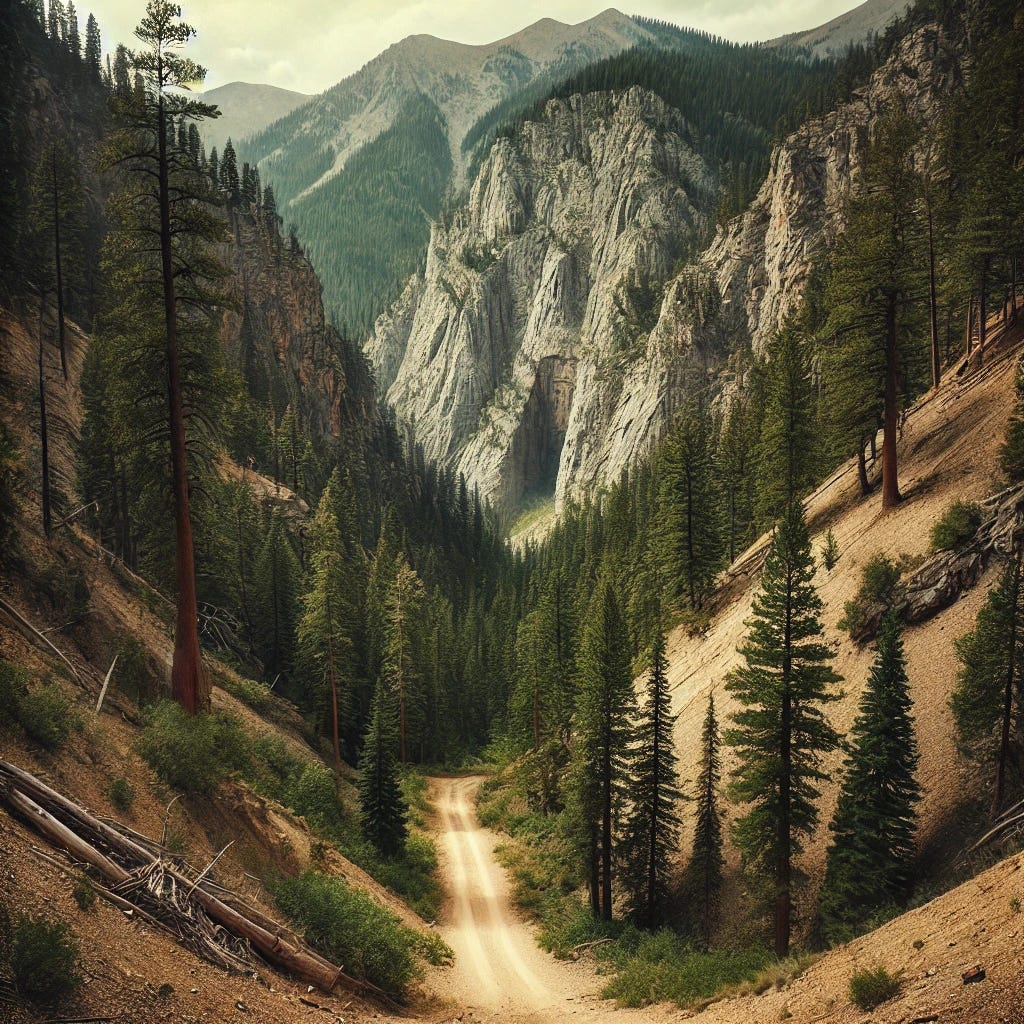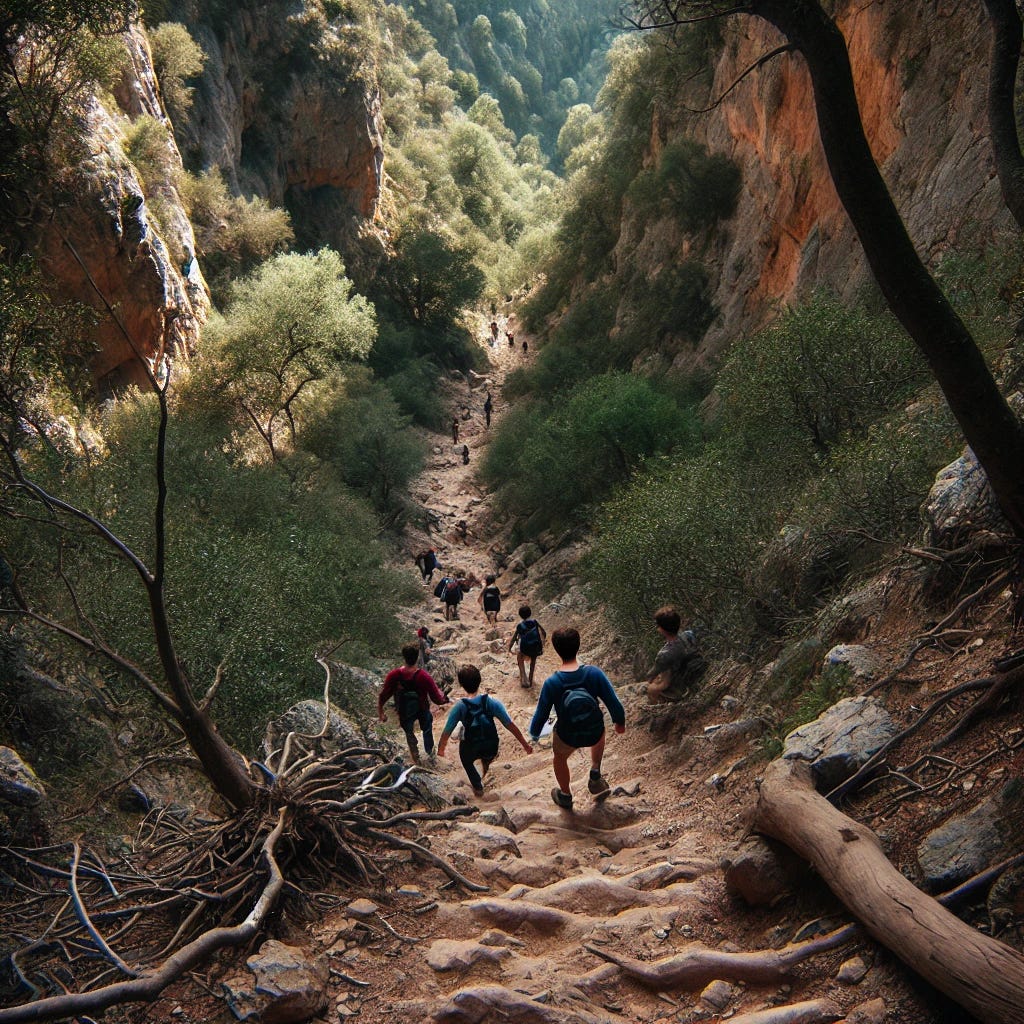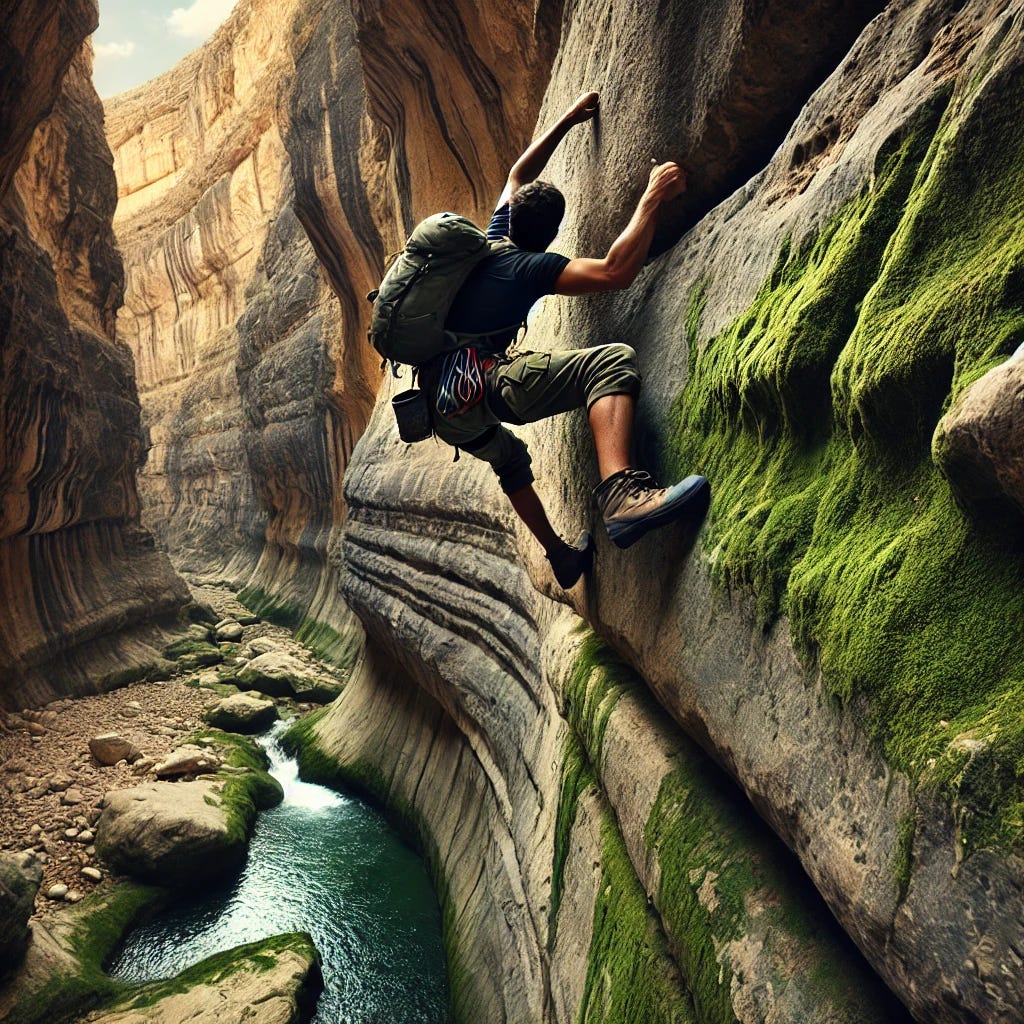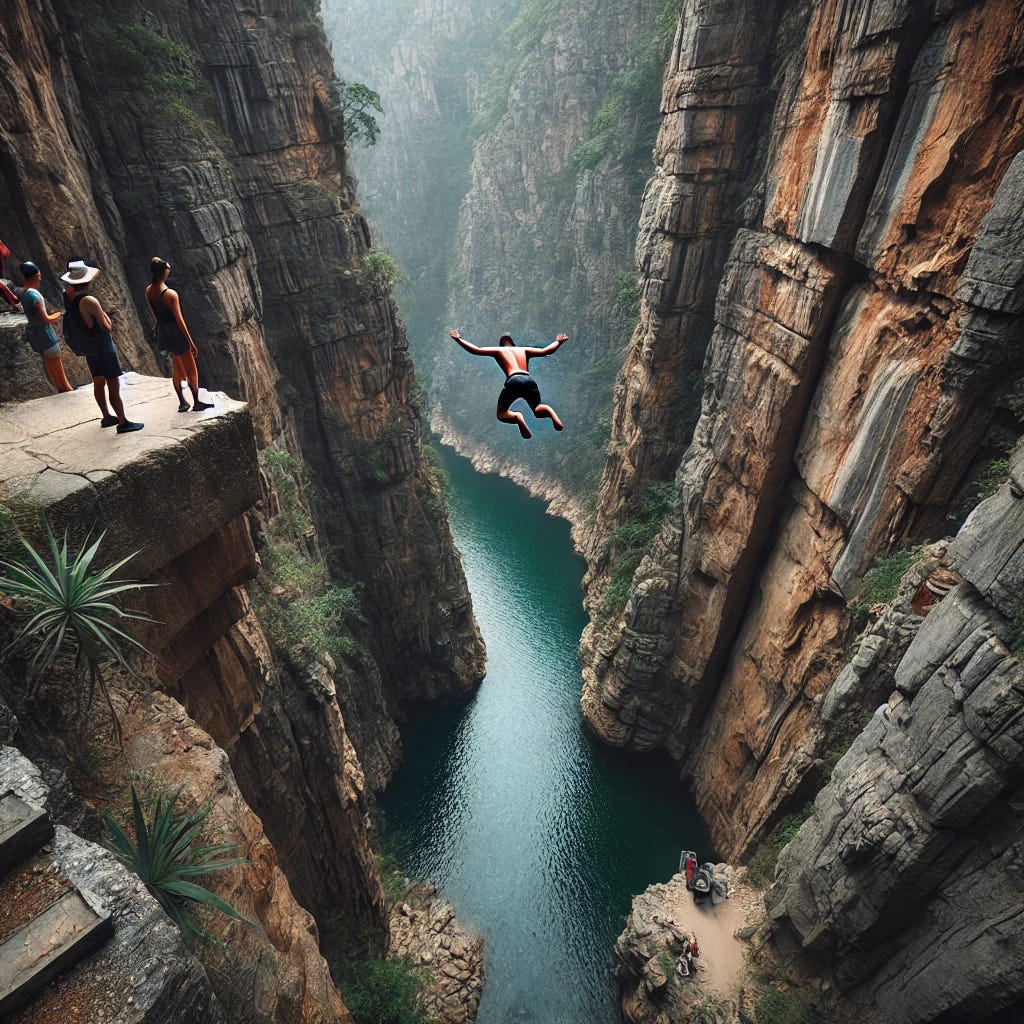There are certain places in life you don’t just go to—you have to know about them. Monkey Canyon, buried deep in the Angeles National Forest just north of Glendale, was one of those places. It wasn’t marked on any map, there was no official parking lot, and no helpful signs saying, "This way to teenage recklessness!" You had to either be introduced to it by someone in the know or stumble upon it by accident—which was unlikely unless you regularly tumbled out of moving vehicles along the Angeles Crest Highway.
For those unfamiliar, the Angeles National Forest is the mountainous wilderness that looms over the Los Angeles basin, a rugged escape where city kids could pretend they were frontiersmen, assuming frontiersmen wore Vans and carried gas station snacks in their backpacks. Monkey Canyon was one of its hidden gems—an unmarked turnoff along the highway that led, if you were brave or foolish enough to venture down, to a water-carved playground of natural slides, deep pools, and cliffs that dared you to jump.
Finding it was the first adventure. Someone always knew where it was, but they could never quite explain it. Directions were something like: “Drive up Angeles Crest, and when you see the big turn past the rock that kinda looks like a dinosaur head, start looking on the right. There’s no parking, but there’s this dirt pull-off. If you hit the tunnel, you’ve gone too far.” It was a test of faith, really. You just had to park on a slant, wedge yourself between the guardrail and the road, and trust that you’d find your way down.
And the descent—oh, the descent. The trail (if you could call it that) was a steep, loose-dirt-and-rock scramble through bushes that had a personal vendetta against bare legs. You slid, you grabbed onto whatever tree roots you could find, and you prayed you wouldn't turn an ankle before reaching the canyon floor. But when you finally broke through the brush and saw the water shimmering below, it was all worth it.
Monkey Canyon had a natural water park feel—except without the safety regulations, lifeguards, or any real guarantee that you wouldn’t walk away with a few bruises. Smooth granite chutes funneled water into pools below, creating perfect natural slides, some gentle and fun, others... less so. The best one shot you out so fast that you barely had time to register that you were airborne before splashing down, limbs flailing like a malfunctioning crash test dummy.
But the real main event was the jumping cliffs. On either side of the main pool, rocky ledges jutted out, each daring you to climb up and take the plunge. I watched for a while as the regulars made it look easy, leaping into the air like they were auditioning for a Mountain Dew commercial. My friends started nudging me, telling me I had to do it. And, of course, my teenage brain immediately shut off all logic and reason.
Now, here’s the thing: I wasn’t scared of the jump. The drop, about 25 or 30 feet, looked doable. What no one warned me about was the climb up. The rock face was slippery—coated in a fine layer of moss, algae, and what I can only assume was the regret of other people who’d tried this before. Every step was a battle against gravity, every handhold a test of whether or not I would be staying in one piece. More than once, I slipped and had to claw my way back up, feeling less like an intrepid adventurer and more like a very dumb lizard trying to climb a greased window.
But I made it. Standing on that ledge, the water looked so much farther away than it had from below. But by that point, there was no backing out. I took a deep breath, ran a couple of steps forward, and launched myself into the air. For a split second, I was weightless. Then, before my brain could process any regrets, I smacked into the water, surfaced, and let out a victorious holler.
And then, I saw it. Across the way, about another ten feet higher, was The Big One. The kind of cliff that separated the brave from the truly unhinged. The climb to that ledge looked like something out of a survival documentary, and while I watched a couple of guys hike up and make the jump, I had no shame in admitting that I was perfectly fine where I was. Some mountains are meant to be climbed. Others are meant to be admired from the safety of a floating position in a cool mountain pool.
Looking back, I realize that Monkey Canyon wasn’t just a place—it was a rite of passage. A proving ground for dumb decisions and stories you’d tell for years. I don’t know if I’d have the guts (or the joints) to do it now, but I like knowing it’s still out there, hidden in the hills above the city, waiting for the next generation of reckless teenagers to find their way down.






